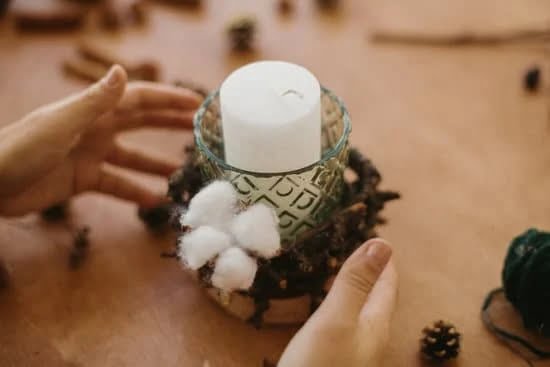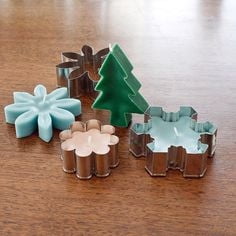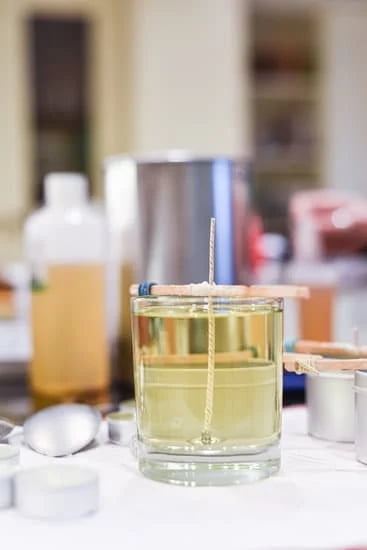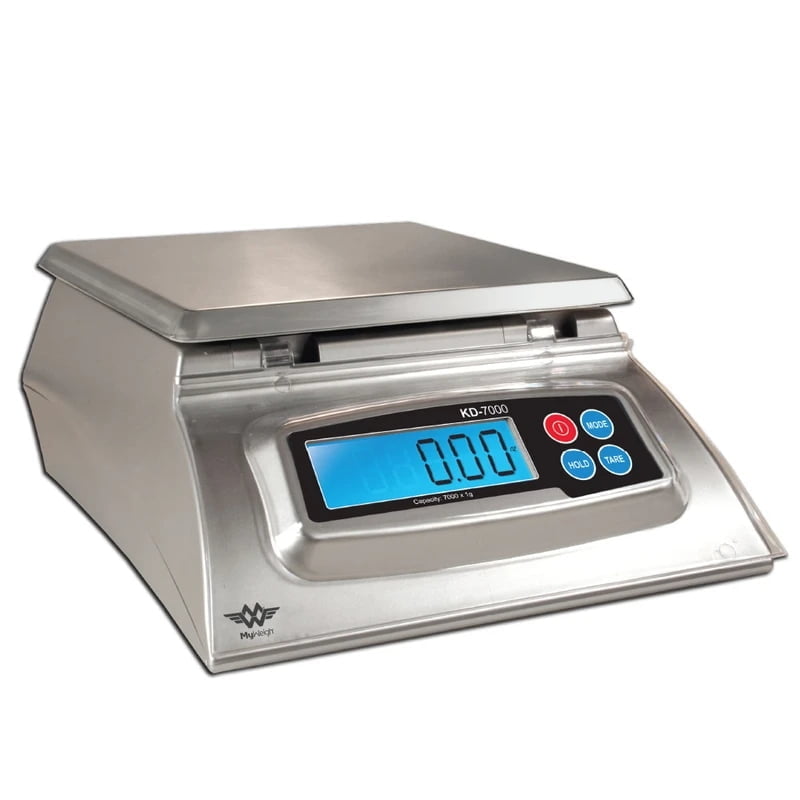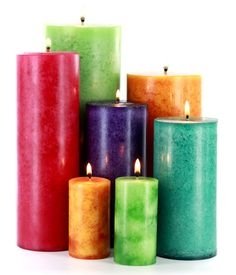When it comes to creating beautiful and fragrant candles, there is an art and science behind the process that separates amateur candle making from the professional level. Professional candle making goes beyond simply melting wax and pouring it into a mold; it involves a deep understanding of various techniques, materials, and tools. This introductory section will delve into the fascinating realm of professional candle making, exploring its history, techniques, and creative possibilities.
Professional candle making has a rich history that dates back to ancient civilizations. From the earliest known candles made of animal fat in Ancient Egypt to the discovery of beeswax candles in Greece and Rome, the craft has evolved over time with advancements in technology and an array of new materials. Today, modern techniques have revolutionized professional candle making, allowing for endless experimentation with scents, colors, and designs.
Choosing the right materials plays a crucial role in creating high-quality candles. Whether it’s selecting the perfect wax base or carefully curating fragrance oils and color additives, professional candle makers understand that each component contributes to the final product’s appearance, burn time, scent throw, and overall performance. This section will provide a comprehensive guide to help aspiring professionals navigate through numerous options available in the market.
Mastering the technique is another vital aspect of professional candle making. Crafting exquisite candles requires knowledge of proper temperature control during melting and pouring processes as well as understanding how different wicks burn within specific wax blends. Skillfully combining these elements can result in stunning creations that not only emit captivating aromas but also display exceptional burning qualities.
As we embark on this journey into the world of professional candle making, prepare to discover both traditional practices steeped in history as well as innovative methods pushing boundaries using modern technology. Get ready to explore an art form that unites creativity with scientific precision – where imagination is boundless and every flickering flame tells a story.
In this article series, we will unlock the secrets behind crafting exquisite candles while offering practical insights to those looking to turn their passion for candle making into a thriving business.
The History of Professional Candle Making
Candles have been used for centuries, providing light and ambiance in various settings. The history of professional candle making spans from ancient times to the modern techniques used today. Understanding the evolution of this craft can provide valuable insights into the art and science behind professional candle making.
Ancient Origins
The origins of professional candle making can be traced back to ancient civilizations such as the Egyptians, Greeks, and Romans. In these early societies, candles were primarily made from animal fats or beeswax. Animal fats were often derived from tallow, which produced a low-quality candle with an unpleasant odor when burned. Beeswax, on the other hand, was considered a luxury material due to its sweet smell and cleaner burn.
The Middle Ages and Beyond
During the Middle Ages, candle making techniques continued to evolve. Tallow remained a commonly used material due to its affordability and accessibility. However, advancements in technology led to the introduction of new materials such as bayberry wax and spermaceti wax extracted from sperm whales.
In the 18th century, improvements in manufacturing processes enabled candle makers to produce high-quality candles using stearin derived from animal fat or vegetables. These candles burned cleaner and longer than their predecessors, leading to increased popularity among households.
Modern Techniques
The Industrial Revolution marked a significant shift in professional candle making. With advancements in technology and access to new raw materials such as paraffin wax, candles became more affordable and diverse in their applications. Paraffin became widely adopted due to its low cost and versatility, allowing for mass production of candles.
In recent times, natural waxes like soy wax have gained popularity due to their renewable nature and clean burning properties. Additionally, advancements in fragrance oils have allowed professional candle makers to create captivating scents that enhance the overall sensory experience.
As we continue exploring the history of professional candle making, it becomes evident that this craft has evolved significantly over time. From the simple yet functional candles of ancient civilizations to the variety and creativity found in modern techniques, professional candle making continues to be both an art form and a scientific process.
Choosing the Right Materials
When it comes to professional candle making, choosing the right materials is essential for creating high-quality candles. The selection of ingredients can significantly impact the performance and overall aesthetic appeal of the final product. Therefore, it is crucial for candle makers to have a thorough understanding of the different materials available and their specific qualities.
One of the primary ingredients in candle making is wax. There are various types of wax to choose from, each with its own unique characteristics. Some popular options include paraffin wax, soy wax, beeswax, and palm wax. Paraffin wax is widely used because of its affordability and excellent scent throw.
However, it does produce some soot when burned. Soy wax is a natural alternative that burns cleaner and has a longer burn time. Beeswax is known for its natural scent and slow-burning properties, making it ideal for luxury candles. Palm wax is another eco-friendly choice that produces interesting crystalline patterns on the surface of candles.
Another crucial ingredient in candle making is fragrance oil or essential oil. These oils are responsible for creating captivating aromas that fill the room when the candle is lit. It’s important to use high-quality oils specifically designed for candle making to ensure an optimal scent throw and longevity. Candle makers can experiment with different fragrance combinations or create signature scents that set their candles apart from others in the market.
In addition to wax and fragrance oils, other materials used in professional candle making include wicks and dyes or colorants. The type and size of wick chosen will depend on factors such as the diameter of the candle and desired burn time.
It’s important to select wicks that are suitable for the chosen wax type to achieve even burning throughout the candle’s lifespan. Dyes or colorants add visual appeal to candles, allowing candle makers to create a wide range of colors or intricate designs.
Making informed choices about materials will help professional candle makers produce candles that meet their desired standards and customer expectations. By carefully considering the properties and characteristics of each ingredient, candle makers can create candles that not only look beautiful but also perform well in terms of burn time, scent throw, and overall quality.
| Ingredient | Description |
|---|---|
| Wax | A primary ingredient in candle making, available in various types such as paraffin wax, soy wax, beeswax, and palm wax. |
| Fragrance Oil/Essential Oil | Oils responsible for creating captivating aromas in candles; high-quality oils designed specifically for candle making should be used. |
| Wicks | Used to initiate the burning process; type and size of wicks chosen depend on factors such as candle diameter and desired burn time. |
| Dyes/Colorants | Add visual appeal to candles by providing a wide range of colors or intricate designs. |
Essential Tools of the Trade
Professional candle making requires a specific set of tools and equipment to ensure the highest quality and efficiency in the process. These tools go beyond the basic materials needed for candle making and are essential for professional candle makers to achieve their desired results.
One of the most important tools for professional candle making is a high-quality thermometer. This ensures that the wax is heated to the correct temperature, as different types of wax require different melting points. A thermometer also helps in monitoring the temperature during the cooling process, which affects the overall quality of the finished candle.
Another must-have tool is a reliable scale. Accurate measurements are crucial in professional candle making, as even slight variations can affect fragrance ratios and burn time. Using a scale ensures consistency in each batch of candles produced.
In addition to these key tools, professional candle makers also rely on a heat source such as a hot plate or double boiler. This allows them to effectively melt wax without causing overheating or scorching. It is important to choose a heat source that provides consistent and controlled heat throughout the entire process.
Furthermore, having separate containers dedicated solely for candle making is necessary to avoid contamination or unwanted mixtures of fragrances or colors. Stainless steel pouring pitchers with spouts are commonly used as they allow for easy pouring and precise control when filling molds or containers.
Lastly, wick holders are indispensable tools for professional candle makers. These devices hold the wick taut and centered during pouring and cooling, ensuring an even burn throughout the lifetime of the candle.
| Tool | Description |
|---|---|
| Thermometer | A device used to measure temperature accurately during wax melting and cooling. |
| Scale | An instrument used to measure precise amounts of wax, fragrance, and other additives. |
| Heat source | A hot plate or double boiler used to melt wax at a controlled temperature. |
| Pouring pitcher | A stainless steel container with a spout for easy and precise pouring of melted wax into molds or containers. |
| Wick holder | A device that holds the wick in place during pouring and cooling to ensure an even burn. |
Mastering the Technique
Candle making is a craft that requires precision and attention to detail. To become a professional candle maker, it is crucial to master the technique and understand the step-by-step process involved. Here, we present a comprehensive guide that will help you navigate through the various stages of professional candle making:
- Gather your materials: Before you start making candles, it is essential to gather all the necessary materials. This includes wax (such as soy wax or beeswax), wicks, fragrance oils or essential oils for scenting, colorants if desired, and containers or molds for shaping the candles. Ensure that you have a suitable workspace with proper ventilation and tools like a double boiler or melting pot, a thermometer, and a heat source.
- Preparing the wax: Begin by melting the wax in a double boiler or melting pot over low heat. Avoid direct heat as it can lead to overheating and even cause fires. Monitor the temperature using a thermometer until it reaches the recommended melting point for your specific type of wax.
- Adding fragrance and color: Once the wax has completely melted, remove it from heat and let it cool slightly before adding fragrance oil or essential oil of your choice. Stir well to ensure even distribution of scent throughout the melted wax. If you desire colored candles, add colorants in small amounts until your desired shade is achieved.
- Setting up wicks: While waiting for the scented and colored wax to cool down further but still remain in liquid form, prepare your containers by priming them with wick adhesive at their base. Carefully insert pre-cut wicks into these containers, ensuring they are centered and straight.
- Pouring and setting: Slowly pour the scented wax into your prepared containers, taking care not to disturb or move the wicks excessively during this process. Leave some space at the top of the container to allow for the candle to settle and shrink while cooling. Allow the candles to cool and harden completely before trimming the wicks to an appropriate length.
By following these steps, you can master the technique of professional candle making. Remember, practice makes perfect, so don’t be discouraged if your initial attempts are not flawless. With dedication and perseverance, you can create beautiful, fragrant candles that rival those found in stores. Happy candle making.
Scent Selection
Creating captivating aromas is a crucial aspect of professional candle making. The right scent can transport individuals to different times and places, evoke emotions, and create a cozy and inviting atmosphere. Here are some tips on how to select and create captivating fragrances for your professional candles:
- Understanding Fragrance Notes: Like music, fragrance consists of different “notes” that create a harmonious blend. Fragrance notes are categorized into three main categories: top notes, middle/heart notes, and base notes. Top notes are the first scents you notice when the candle is lit, while middle and base notes emerge as the candle burns longer. To create a well-rounded aroma experience, consider incorporating fragrance oils with a combination of these note types.
- Experimenting with Single Notes: Single-note fragrances allow you to capture the essence of a particular scent without any additional complexity. For beginners or those who prefer simplicity, these fragrances offer a pure and straightforward experience. Some popular single-note scents include lavender, vanilla, citrus fruits, and floral scents like rose or jasmine.
- Blending Fragrances: By blending different fragrance oils together, you can create unique and complex scents that cater to specific moods or occasions. When blending fragrances for candles, start with small quantities until you achieve the desired combination. Keep track of each blend’s ratios so you can reproduce successful results in the future.
- Considering Candle Size and Space: Remember that the size of your candle plays an important role in scent diffusion. Smaller candles may require more potent fragrances to fill a room effectively while larger candles disperse scents over an extended period but may require less concentrated fragrance oils.
To further enhance your scent selection process in professional candle making:
– Research reputable suppliers that offer high-quality fragrance oils specifically designed for candle making.
– Take inspiration from nature, memories, special events, or cultural references to develop unique scent profiles.
– Test your candles by burning them in different spaces and environments to evaluate the throw, strength, and longevity of the fragrance.
Creating captivating aromas is a skill that develops over time. As you gain experience in professional candle making, you will refine your scent selection process and discover new combinations that captivate and delight your customers.
Adding Aesthetic Appeal
Decorating and designing professional candles is an important aspect of candle making that adds a unique touch to the final product. The aesthetic appeal of candles plays a significant role in attracting customers and enhancing their overall experience. In this section, we will explore various techniques and ideas for designing and decorating professional candles.
Color Selection
Choosing the right colors for your candles can have a significant impact on their visual appeal. Consider the theme or purpose of your candles and select colors that align with it. For example, soft pastel colors like lavender or baby blue are often associated with relaxation, making them perfect choices for calming scented candles. On the other hand, vibrant and bold colors such as red or orange can be selected for festive or celebratory candles.
Layers and Embeds
One way to add depth and interest to your professional candles is by incorporating layers or embeds into your designs. Layers involve pouring different colored waxes at different stages during the candle-making process, creating visually appealing stripes or patterns when the candle burns.
Embeds refer to adding small objects like dried flowers, crystals, or seashells into the wax before it hardens. These added elements not only enhance the aesthetics but also provide a unique surprise once the candle starts melting.
Carving and Etching
Another technique to elevate the look of professional candles is through carving or etching designs onto their surfaces. This method requires precision and patience but can result in stunning creations. Various tools such as knives, toothpicks, or specialized carving tools can be used to create intricate patterns, symbols, or even words on the candle surface. By carefully removing layers of wax, you can expose different colors underneath or create raised designs that cast beautiful shadows when lit.
Custom Labels and Packaging
Designing custom labels and packaging for your professional candles is essential for branding and marketing purposes. Consider creating unique labels that reflect the style and personality of your candle business. This could include selecting a specific font, using an attractive logo, or incorporating eye-catching graphics. Additionally, the packaging should be sturdy and visually appealing, with options such as elegant gift boxes or eco-friendly materials to enhance the overall presentation.
By utilizing these techniques and incorporating creativity into your designs, you can produce professional candles that stand out in the market. Experimenting with different styles, colors, and textures will not only enhance the visual appeal of your products but also provide you with endless opportunities for artistic expression in the exciting world of professional candle making.
Candle-Making Business Tips
Starting a candle-making business can be a rewarding and profitable venture for those with a passion for the craft. Here are some valuable tips to help you turn your love for professional candle making into a successful business.
1. Market Research: Before diving into the world of candle-making business, it is crucial to conduct thorough market research. Identify your target market and understand their preferences and demands. This will help you create candles that cater to specific customer needs and stand out in a competitive market. Additionally, analyze the existing competition to identify gaps in the market that you can fill with your unique products.
2. Quality Materials: To establish yourself as a professional candle maker, it is essential to prioritize quality materials. Invest in high-quality waxes, dyes, fragrances, and wicks that will ensure excellent performance and longevity of your candles. Using top-notch materials will not only enhance the overall quality of your products but also lead to satisfied customers who are more likely to become repeat buyers.
3. Branding and Packaging: In the candle-making industry, branding plays a vital role in attracting customers and creating brand loyalty. Develop a cohesive brand identity, including logo design, color schemes, and packaging that aligns with your target market’s preferences. Your packaging should not only be visually appealing but also practical and functional for shipping purposes. Consider eco-friendly packaging options to appeal to environmentally-conscious consumers.
4. Online Presence: In today’s digital age, an online presence is crucial for any business’s success. Create a user-friendly website where customers can easily navigate through product offerings, place orders, and contact you with any inquiries or concerns. Utilize social media platforms like Instagram and Facebook to showcase your candles’ aesthetic appeal and engage with potential customers through captivating visuals and informative content.
5. Networking: Building relationships within the industry can greatly benefit your candle-making business both directly and indirectly. Attend trade shows or join professional associations related to home decor or crafts to meet and connect with potential customers, suppliers, and industry experts. Collaborate with other small businesses or influencers for cross-promotional opportunities that can expand your reach and customer base.
By following these tips and maintaining a dedication to quality and craftsmanship, you can successfully turn your passion for professional candle making into a profitable business venture. Remember that consistency, creativity, and customer satisfaction are key to long-term success in this thriving industry.
Troubleshooting and Solutions
Professional candle making, like any craft, is not without its challenges. Despite careful planning and execution, candle makers may encounter various issues along the way. This section will address some of the common challenges faced by professional candle makers and provide potential solutions.
One common challenge in professional candle making is poor scent retention. Sometimes, despite using high-quality fragrance oils or essential oils, the final product may not emit a strong aroma when burned. This can be frustrating for both the candle maker and the customer.
One possible solution to this issue is to increase the fragrance load in the wax. Experimenting with different ratios of fragrance oil to wax can help achieve better scent throw. Alternatively, using additives such as stearin or vybar can enhance scent retention in candles.
Another challenge that professional candle makers often face is uneven burning. When a candle burns unevenly, it not only affects its aesthetic appeal but also reduces its burn time. Several factors can contribute to uneven burning, including wick placement, size, or type of container used.
To overcome this challenge, it is crucial to ensure that wicks are centered and straight during the pouring process. In addition, selecting wicks suitable for the type and size of candles being made is essential for achieving an even burn.
Inconsistent coloration is yet another issue that professional candle makers may encounter. Achieving consistent color throughout a batch of candles can be difficult due to variations in dye concentration or improper mixing techniques. To address this problem, meticulous measuring and weighing of dyes are necessary to maintain consistency in color from one batch to another. Proper mixing techniques such as stirring slowly and patiently can help evenly distribute the dye throughout the wax.
By understanding these common challenges faced by professional candle makers and learning how to overcome them, aspiring artisans can create high-quality candles that meet customer expectations while maintaining their passion for the craft. Troubleshooting and finding solutions to these issues is an essential part of the candle making process, allowing candle makers to continually improve their art and provide customers with exquisite candles.
Conclusion
In conclusion, professional candle making is an art form that has a rich history and continues to thrive in the modern world. From ancient times to the present day, candle making has evolved, incorporating new techniques and materials to create beautiful and functional candles. With the right materials, essential tools, and mastery of the technique, professional candle makers can create captivating aromas and visually stunning designs.
One of the most exciting aspects of professional candle making is its endless creative possibilities. From choosing unique scent combinations to experimenting with different colors and textures, there is no limit to the creative expression that can be achieved with candles. Whether you are creating candles for personal use or starting a candle-making business, the opportunity for innovation and artistic exploration is vast.
For those considering turning their passion for professional candle making into profit, there are various tips that can help navigate the business side of this craft. Understanding market trends, building a strong brand, and effectively marketing your products are all key components to running a successful candle-making business. Additionally, being aware of common challenges faced by professional candle makers and finding solutions for them will contribute to long-term success.
Overall, the world of professional candle making offers a rewarding combination of creativity and entrepreneurship. It allows individuals to explore their artistic abilities while also providing opportunities for financial growth. With dedication, passion, and a willingness to continually learn and innovate, anyone can find success in this thriving industry filled with endless creative possibilities.

Welcome to my candle making blog! In this blog, I will be sharing my tips and tricks for making candles. I will also be sharing some of my favorite recipes.

